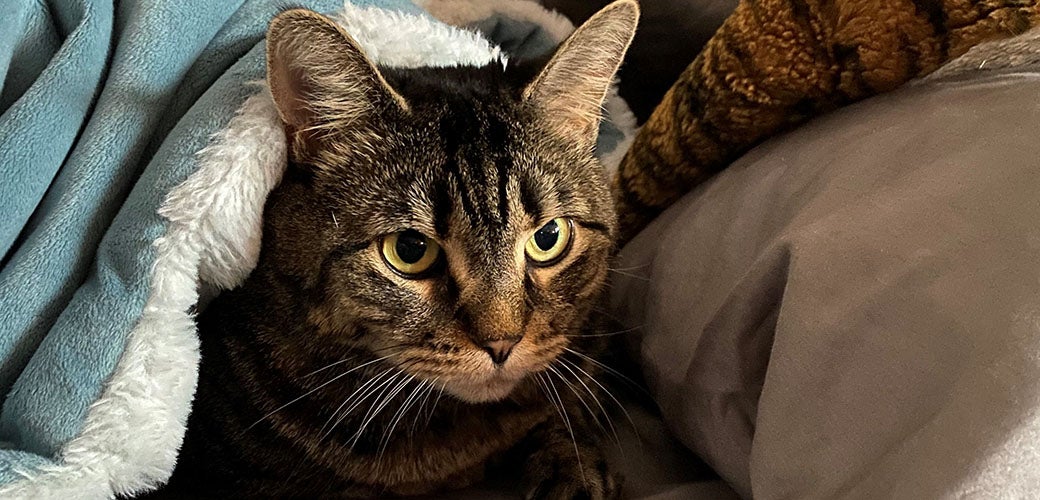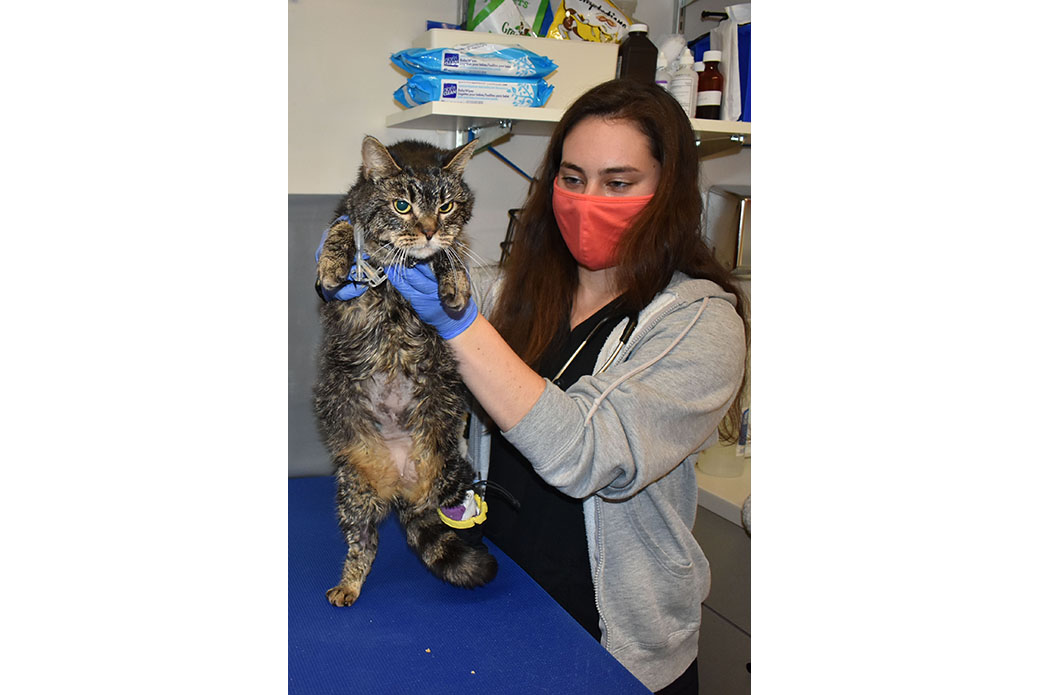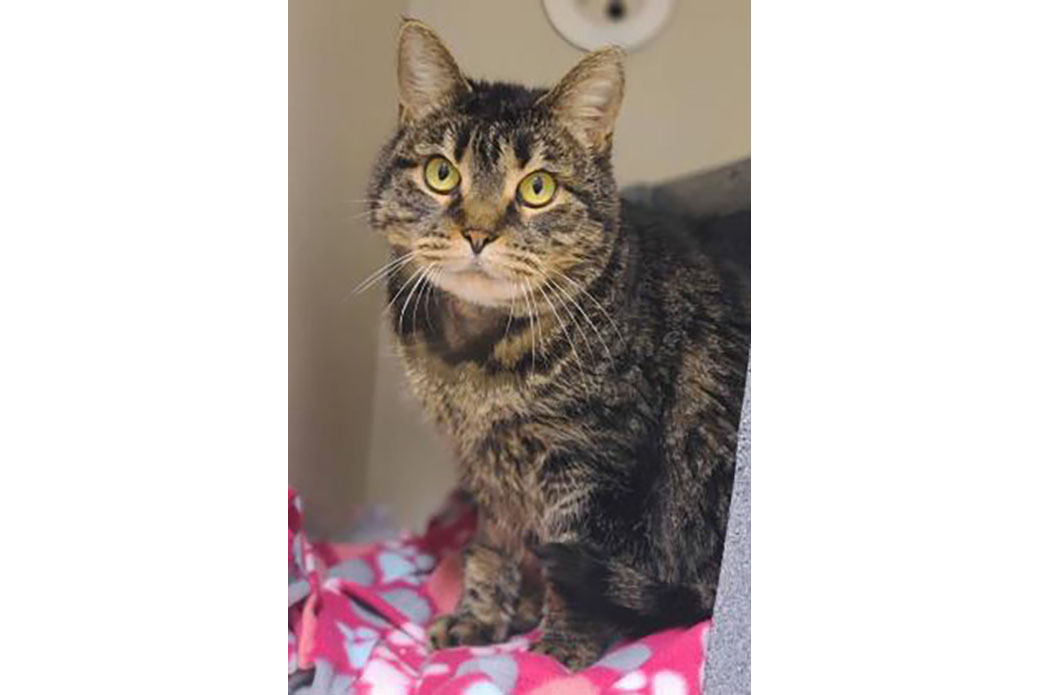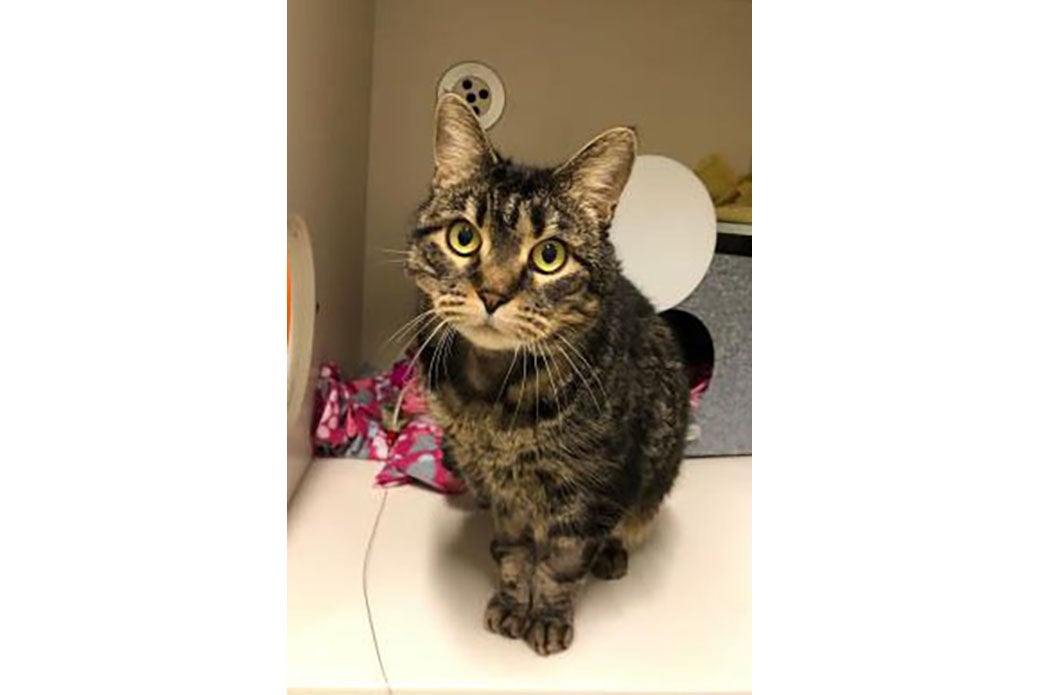

Maya M. was looking for the companionship of an adult cat when she learned about Lizzy, an older feline available for adoption at the ASPCA.
“I wanted to adopt, not buy,” says Maya, a first-time cat adopter. “And I knew I wanted an adult cat.”
Maya applied online, and ASPCA Matchmaker Solangel Rojas suggested Lizzy, a 10-year-old tabby. Matchmaker Lisa Berger then arranged a Zoom call with Maya and Lizzy’s foster caregiver.
“The process moved along really quickly,” says Maya, a software engineer who works from her Manhattan apartment. Within days, Maya had her new feline friend.
A Difficult Past
As seamless as Lizzy’s remote adoption process was, her past is much more complicated.
On September 30, a Good Samaritan found Lizzy in the hallway of her apartment building in the Bronx. Seeing open wounds and matted fur on the tabby’s backside, Lizzy’s finder took her to Animal Care Centers of NYC (ACC)’s Manhattan location, which referred her case to the NYPD. The police conducted an investigation, but Lizzy’s owner was never located.

Aside from her wounds and matted coat, Lizzy was dehydrated and underweight. Her skin was icteric—yellow—the equivalent of jaundice in humans.

ACC officials contacted the ASPCA before transporting Lizzy to the Animal Medical Center (AMC) in Manhattan where she was hospitalized for emergency critical care. She underwent an ultrasound and liver aspiration, and the AMC surgical team treated and closed her wounds.
A Definitive Diagnosis
During this time, Lizzy was also diagnosed with hepatic lipidosis, or fatty liver disease, which can be fatal if not treated quickly and aggressively.
“Lizzy had an abnormal accumulation of lipids, or fats, in her liver, which can occur as a primary condition or develop secondary to other diseases that result in decreased food intake,” says Dr. Danielle Armato, a veterinarian in the ASPCA’s Animal Recovery Center (ARC) who treated Lizzy after she was transported to the ASPCA Animal Hospital on October 6.


Although the exact cause of Lizzy’s liver disease was unknown, nutritional support is essential in a cat’s recovery from hepatic lipidosis. A feeding tube was surgically placed to provide Lizzy with supplemental nutrition—high-calorie canned cat food mixed with water—so her liver could mobilize the excessive fat.
Dr. Laura Niestat, the forensic veterinarian who examined Lizzy on her arrival to the ASPCA, says that cats usually get hepatic lipidosis secondary to anorexia.
“It’s something we see in cats routinely,” she says. “But figuring out why they stop eating in the first place is the tricky part.”
Dr. Niestat suspects Lizzy’s matting and poor appetite may have come before her wounds because her wounds looked like they were recent.
“Cats may become matted if they stop grooming themselves because they don’t feel well or can’t reach certain areas,” she says. “It almost looks like someone tried to cut the matts off with something sharp like a scissor, but we’re just not sure.”

Lizzy remained in intensive care at ASPCA Animal Hospital for 11 days before being transferred to ARC.
“As her liver values improved, Lizzy’s jaundice resolved,” says Dr. Armato. “Her blood work normalized less than two weeks after supplemental feeding was started. On October 20, we were able to remove her feeding tube because she was eating on her own and gaining weight.”
All Set For Adoption
Lizzy was placed in a foster home in early November.
“She was a little nervous at first, but nothing that required any special behavior work,” says Marny Nofi, Senior Manager of Behavioral Sciences. “Lizzy likes attention on her own terms, and she solicited and leaned into all petting when she was at the ASPCA.”


Maya, who adopted Lizzy just before Christmas, says Lizzy is quiet but can be playful and likes her toys.
“She’s mild-mannered but has a lot of personality,” says Maya.
“My partner is here quite a bit, so Lizzy is hardly ever alone,” Maya adds. “She’s adjusted fully to our home.”


Lizzy’s comfort and Maya’s joy come from the dedicated effort of compassionate neighbors, foster caregivers, veterinarians and matchmakers—all of whom got what they most wanted as well: a new and better life for Lizzy.
Source: Read Full Article



